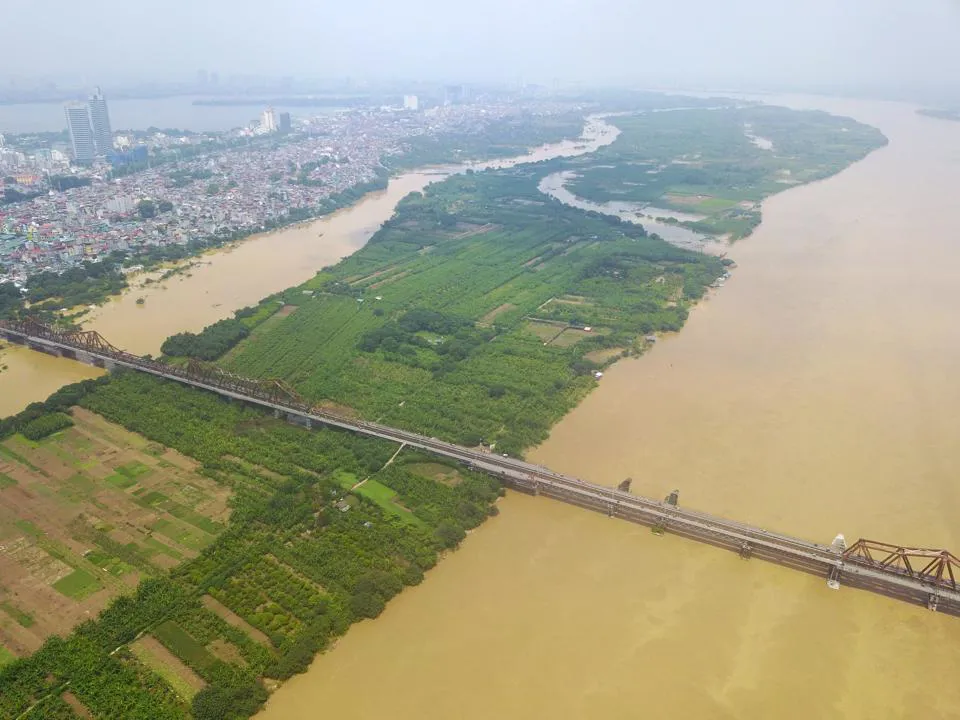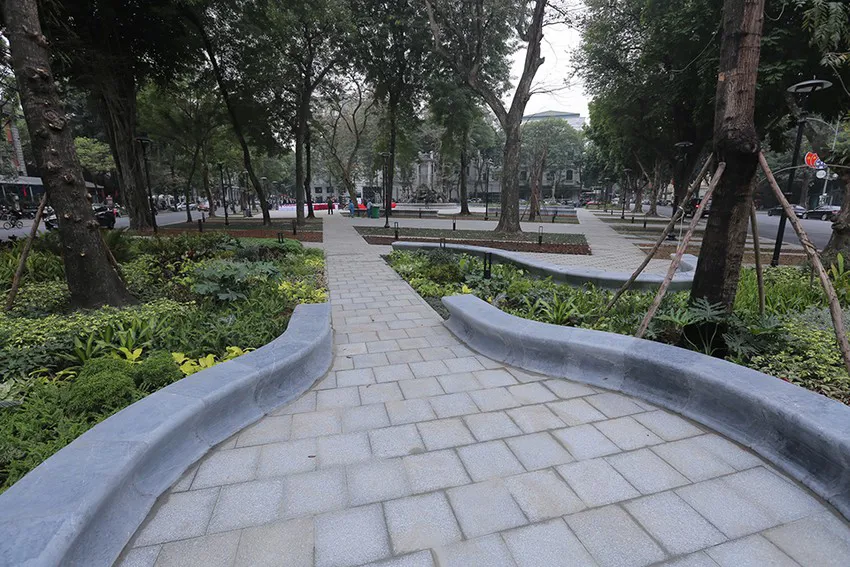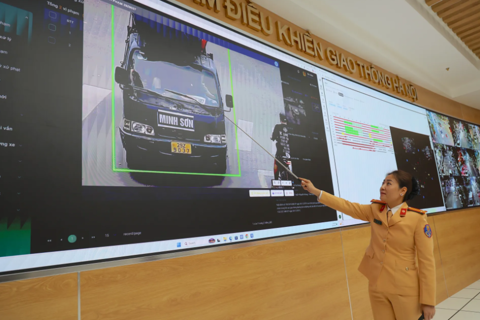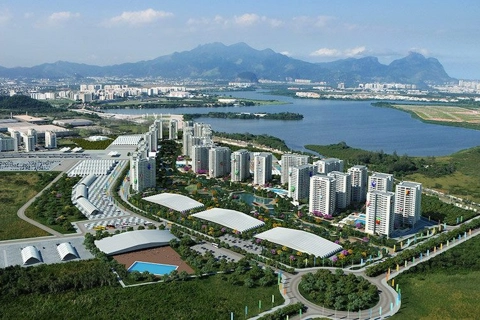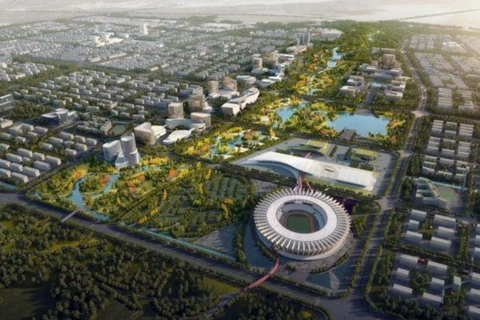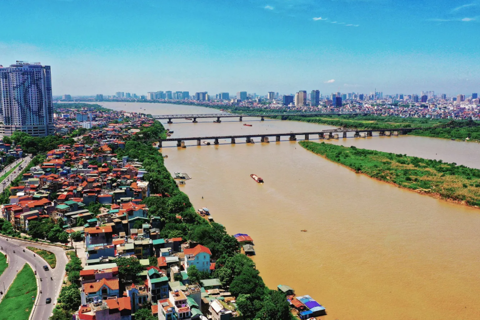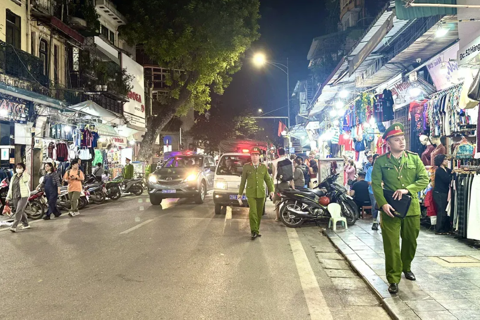Hanoi to expand green spaces
Public green spaces are vital for Hanoi, a densely populated metropolitan area facing the challenges of rapid urbanization, climate change, and air pollution.
Building a multi-purpose cultural park on the Red River's alluvial island will help Hanoi expand urban green spaces and improve the quality of life for locals, experts have said.
The municipal People's Committee has recently agreed to allow four districts - Hoan Kiem, Long Bien, Ba Dinh and Tay Ho - to continue studying the project to develop the Red River alluvial island into a multi-purpose cultural park. Funding for the development would come from these districts' budgets.
Pham Quoc Tuyen, Deputy Director of Hanoi's Department of Planning and Architecture, told local media that the area is planned for green parks, agriculture, and tourism.
"The Red River planning project has set tasks for the four districts, including reviewing and studying existing residential areas, drawing up detailed plans, and submitting them to the relevant authorities for approval," Tuyen said.
At present, the district authorities are carrying out surveying, mapping and planning. The results will then be sent to the Hanoi Department of Agriculture and Rural Development as a basis for programming and approval."
The alluvial island on the Red River from above. Photo: Hai Linh/The Hanoi Times |
According to the Red River Urban Subdivision Planning, the Red River in Hanoi flows through an area of 686 hectares in the downtown area from Thang Long Bridge to Thanh Tri Bridge, where more than 181,000 people live. This place is designed to be a multifunctional area for cultural, commercial and public purposes.
A green park area with short-rotation trees, ornamental plants, seasonal flowers, and tourist services is planned in the riverside area. In addition, a sports area, a community art space, and a creative space focusing on the historical and cultural values of the Red River will be built in the riverbank area of Hoan Kiem District.
"However, this area must comply with two important master plans, namely the Master Plan for Embankment and Flood Prevention, and the Adjustment of the Capital Master Plan, approved by the Vietnamese Government in 2011," said Tuyen.
Hanoi needs effective planning to expand green areas
Many planning experts believe that Hanoi needs effective and unambiguous legal regulations dedicated to green spaces, from planning to management, that create a high-quality living and leisure environment for the city's residents. This has particularly become a growing issue for Hanoi since the capital's administrative boundary expansion 15 years ago.
The capital is now in the midst of a prolonged heat wave, so flower gardens and parks in Hanoi have become popular spots.
Mai Tuan Hung, a resident of Hang Muoi Street in Hoan Kiem District, told The Hanoi Times: "On hot days, flower gardens and parks are ideal places for people, especially those like me who live in the cramped spaces of the Old Quarter."
Hung usually walks and exercises in the Dien Hong flower garden near Hoan Kiem Lake, where there are many old trees with leafy canopies. "Life would be very frustrating and uncomfortable without such public flower gardens to relax and exercise daily," he said.
Dien Hong flower garden, with a large courtyard in the middle, one of the few green spaces in downtown Hanoi. Photo: Trong Phu |
Public and green spaces are essential for a city, but they are rare in central Hanoi.
Statistics from the Livable Cities Project of Canada's HealthBridge Foundation in Vietnam showed that Hanoi needs more flower gardens and playgrounds in residential areas, especially in the downtown, where the land used for public and green spaces accounts for less than 2% of the total area.
"For example, in Hoan Kiem District, there are only 13 flower gardens, an average of 0.1 square meters per person. In the Old Quarter, the rate is even lower. In Cua Dong Ward, there are nearly 70,000 people but only one flower garden, while a lot of space is used for parking cars," the foundation said.
The Hanoi government has set an average of 3.02 square meters of public and green space per person for downtown districts by 2030.
According to expert Nguyen Thi Hien of the HealthBridge Foundation in Vietnam, Hanoi has paid some attention to developing public and green spaces, such as planting more trees, building more parks and gardens, and opening pedestrian streets, but the spaces have not yet met the demand of residents.
"Many public spaces have been commercialized and privatized. The sidewalks are occupied by business households, while many public spaces are used as parking lots or to expand transport infrastructure," Hien told The Hanoi Times.
"Over the years, Hanoi's Hoan Kiem District has carried out many projects to develop services, trade and tourism in the Old Quarter, such as the pedestrian walkways. This was really meaningful because Hanoi was very short of parks, squares, and public playgrounds, especially for children. For tourism, the impact of the pedestrian streets was obvious," Hien said.
She emphasized that Hanoi should closely integrate the development of green areas, flower gardens and playgrounds into the planning process in order to expand and manage them.
To effectively address unbalanced development that favors residential and office construction over public spaces, Hanoi's leaders have made efforts in recent years to expand green areas in the capital. Since 2014, Hanoi has approved the planning of greenery, parks, flower gardens, and lakes in the city until 2030, with a vision until 2050.
Hanoi aims to build 18 new parks in the downtown area by 2030, increasing the number of parks to 60, of which the 42 existing parks and flower gardens will be renovated and upgraded.
Since 2016, in addition to the existing green spaces, the city has started to build a number of large-scale parks, such as Thanh Xuan Park, CXCV1 and Me Tri Amusement Parks, and CV1 Cau Giay Park, among others.
"I think renovating or building a lake in Hanoi's urban areas is a good idea that should be repeated in more places to improve the current stifling situation and help create a healthy living environment for the city's residents," Hien emphasized.

